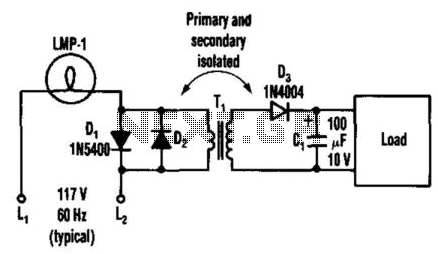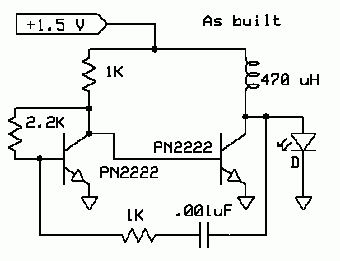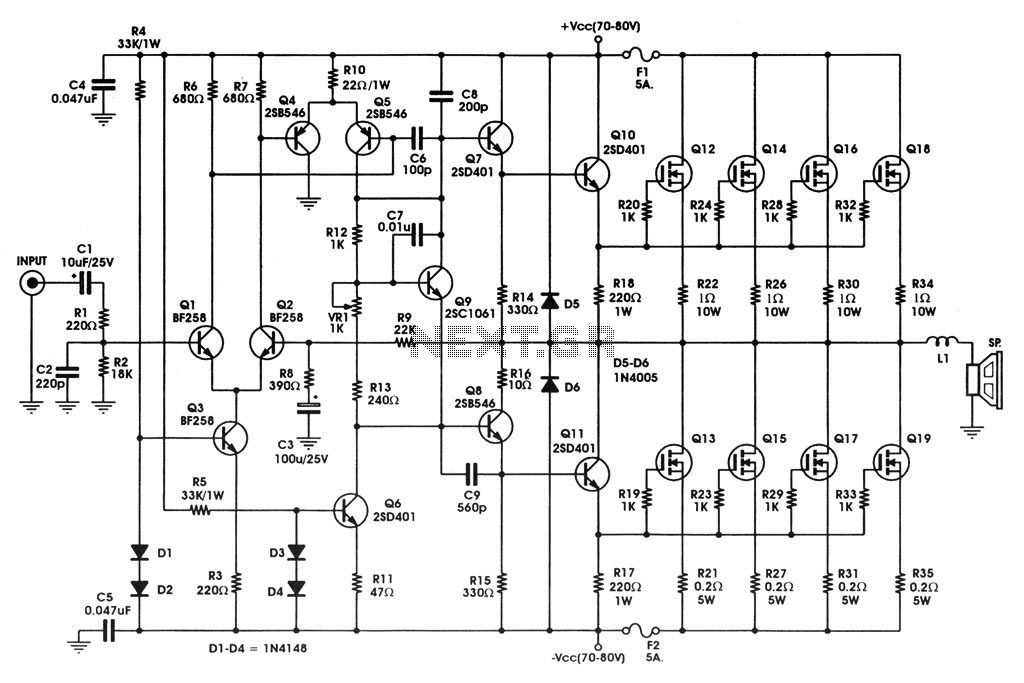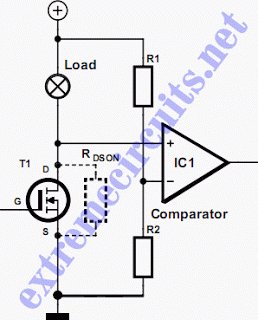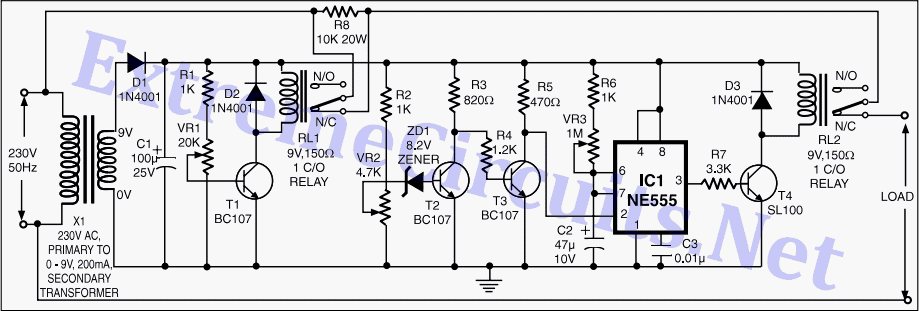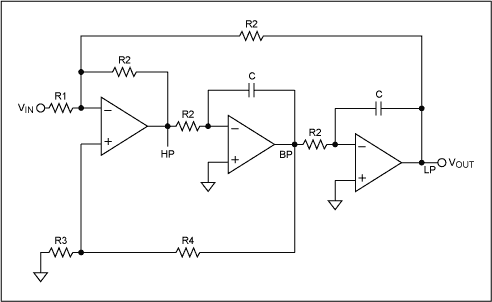
A Half Bridge Buck Boost Converter with high side N-type MOSFET
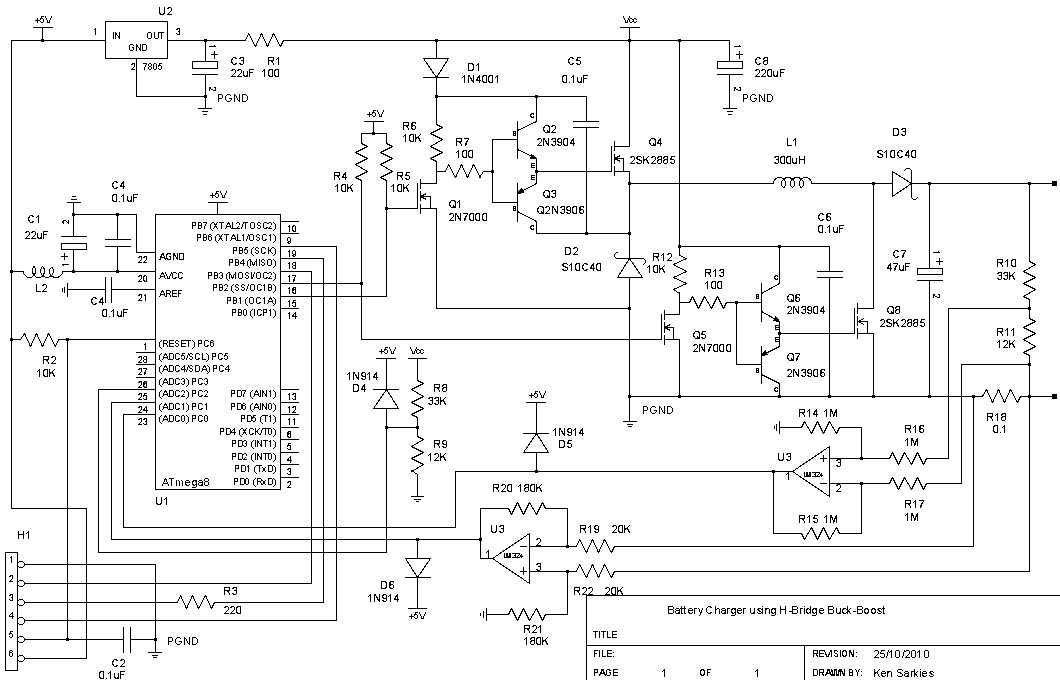
The buck-boost converter is valuable when the output and/or input voltages fluctuate significantly, necessitating the use of a buck converter at times and a boost converter at others. An example, which will be elaborated on in a future project, is a battery charger designed for various battery types, voltages, and capacities, powered by a 12V source. The simplest buck-boost circuit employs a single inductor, a MOSFET, a catch diode, and a filter capacitor. This configuration is non-isolating and inverting. Other non-isolating buck-boost circuits include the inverting topology and the Sepic, which is non-inverting. These circuits utilize two inductors that do not need to be coupled, although coupled inductors can significantly reduce output ripple. A drawback of these circuits is the requirement for a coupling capacitor that must withstand high ripple current. The H-Bridge circuit provides a buck-boost function using a single inductor without inversion. It essentially combines a buck converter with a boost circuit. In this case, the inductor is positioned at the output for the buck section and at the input for the boost section, allowing for the use of a single inductor. A filter capacitor is absent in the buck part of the circuit. Control of this circuit involves independent management of each section, making it relatively complex. Various companies manufacture controller chips for this type of circuit, such as Linear Technology (e.g., LTC3780, LTM4607). The H-Bridge is named for the arrangement of the MOSFETs, which form the sides of an "H" with the inductor acting as the crossbar. The buck and boost components of the circuit can operate in synchronous mode. Alternatively, the circuit can function non-synchronously using catch diodes in place of two of the MOSFETs, simplifying the circuit and its control. This configuration is often referred to as a classic buck-boost converter, although comprehensive online references for this circuit are limited. Some sources discuss the inefficiencies associated with the circuit, particularly concerning high inductor and capacitor currents. To mitigate these issues, it is suggested to operate the circuit in either buck or boost mode based on the input voltage, with a buck-boost mode near the point where the input and output voltages are equal. Other references explore control schemes where the buck and boost sections are managed by different circuit state variables, examining efficiency relative to the phase of switching for each section, which shows minimal variation regardless of phase differences. A detailed theoretical and simulation study of the H-bridge buck-boost converter is provided to clarify operational modes and estimate efficiency. One reference mentions a control chip by STL Electronics for the H-bridge circuit, recommending the exclusion of one of the four states of the two switches, complicating the control algorithm without clear justification. Simulations indicate that any efficiency improvements from this restriction are marginal. The MOSFETs used are logic-level n-types salvaged from old computer motherboards, which can be substituted with other suitable low-voltage, low on-resistance types. These specific MOSFETs have an on-resistance of approximately 20 mΩ at a 10V gate-source voltage. The Schottky diodes, also salvaged from older equipment, can handle a forward current of 10A. The drive circuitry has been discussed in previous switch-mode power supply (SMPS) projects, and the drive circuit for the upper MOSFET utilizes a charge pump to elevate the MOSFET gate voltage.
The buck-boost converter serves as an essential component in applications requiring voltage regulation where input and output voltages can vary widely. Its ability to adaptively switch between buck and boost modes allows for efficient power management, especially in battery charging scenarios. The simplest configuration, comprising a single inductor, MOSFET, catch diode, and filter capacitor, exemplifies a straightforward approach. However, more complex topologies, such as the H-Bridge, offer enhanced functionality by allowing synchronous operation of the buck and boost stages.
In the H-Bridge design, the independent control of buck and boost sections is critical, necessitating careful consideration of timing and switching sequences to optimize efficiency. The use of logic-level n-channel MOSFETs facilitates lower on-resistance, thereby reducing conduction losses. The incorporation of Schottky diodes further enhances the performance by minimizing voltage drops during reverse conduction, which is vital in maintaining high efficiency in power conversion.
The control strategy for the H-Bridge must account for various operational states, and while some designs suggest excluding certain states to streamline control, simulations indicate that such exclusions may not yield significant efficiency benefits. This insight underscores the importance of thorough testing and validation in the design process to ensure optimal performance across varying load conditions.
Overall, the buck-boost converter's versatility and adaptability make it an invaluable asset in modern electronic systems, particularly in applications where power supply stability and efficiency are paramount.The buck-boost converter is of value where the output and/or input voltages vary to such an extent that on occasions a buck converter is needed, while on other occasions a boost converter is needed. An example (that will be described further in another project) is that of a battery charger for a number of different battery types, voltages and capa
cities and powered by a 12V source. The simplest buck-boost circuit uses a single inductor, MOSFET, catch diode and filter capacitor. This circuit is non-isolating and inverting. Other non-isolating buck-boost circuits include the †uk, which is inverting, and the Sepic, which is non-inverting. These circuits require two inductors which need not be coupled, although coupled inductors can provide much lower output ripple.
A disadvantage of these circuits is that they require a coupling capacitor which must be able to support high ripple current. The H-Bridge circuit provides a buck-boost function using a single inductor and without inversion. This is essentially a buck converter followed by a boost circuit. Since the former has its inductor is at the output while the latter has the inductor at the input, they may be replaced by a single inductor.
A filter capacitor is not present in the buck part of the circuit. The control of this circuit involves separate control of each section, and as such tends to be somewhat complicated. A number of companies produce controller chips for this type of circuit, including Linear Technology (eg LTC3780, LTM4607).
The H-Bridge is so called because the MOSFETs form the sides of an H with the inductor as the crossbar. In this form the buck and boost parts of the circuit are operated in synchronous mode (second diagram below).
It is also possible to operate the circuit non-synchronously using catch diodes in place of two of the MOSFETs as shown in the first diagram, with associated simplification of the circuit and its control. Such a circuit is described in reference 3 below. This circuit is commonly described as a classic buck-boost converter, although useful Internet references for this circuit are rare.
Reference 2 gives a good description of the drawbacks of the circuit, most of which focus on its efficiency, and high inductor and capacitor current. The way they suggest to overcome this is to place the circuit into either buck or boost mode depending on the input voltage, with a buck-boost mode near the point where the output and input voltages are the same.
Reference 3 discusses a control scheme wherein the buck and boost sections are controlled by different circuit state variables. They investigate efficiency against the relative phase of the switching of each section, and show that it varies little if at all regardless of the phase difference.
We provide a more detailed theoretical and simulation investigation of the H-bridge buck-boost converter to illuminate the modes of operation and to determine estimates of efficiency. Reference 3 refers to a control chip by STL Electronics for the H-bridge circuit. The authors insist that one of the four states of the two switches should be excluded. This makes the control algorithm rather complex. No justification for this is given other than that it doesn`t occur in either the buck or boost circuit states.
Our simulations indicate that any efficiency gains from applying this restriction are incidental and appear to be small. The MOSFETs are logic level n-types that were scrounged out of old computer motherboards, and can be replaced with other suitable low voltage, low on-resistance types.
These particular MOSFETs have an on-resistance of about 20m © at 10V gate-source voltage. The Schottky diodes were also scrounged out of old equipment and can handle 10A forward current. The drive circuitry has already been discussed in earlier SMPS projects. The drive circuit for the upper MOSFET uses a charge pump to raise the MOSFET gate voltage above the 🔗 External reference
The buck-boost converter serves as an essential component in applications requiring voltage regulation where input and output voltages can vary widely. Its ability to adaptively switch between buck and boost modes allows for efficient power management, especially in battery charging scenarios. The simplest configuration, comprising a single inductor, MOSFET, catch diode, and filter capacitor, exemplifies a straightforward approach. However, more complex topologies, such as the H-Bridge, offer enhanced functionality by allowing synchronous operation of the buck and boost stages.
In the H-Bridge design, the independent control of buck and boost sections is critical, necessitating careful consideration of timing and switching sequences to optimize efficiency. The use of logic-level n-channel MOSFETs facilitates lower on-resistance, thereby reducing conduction losses. The incorporation of Schottky diodes further enhances the performance by minimizing voltage drops during reverse conduction, which is vital in maintaining high efficiency in power conversion.
The control strategy for the H-Bridge must account for various operational states, and while some designs suggest excluding certain states to streamline control, simulations indicate that such exclusions may not yield significant efficiency benefits. This insight underscores the importance of thorough testing and validation in the design process to ensure optimal performance across varying load conditions.
Overall, the buck-boost converter's versatility and adaptability make it an invaluable asset in modern electronic systems, particularly in applications where power supply stability and efficiency are paramount.The buck-boost converter is of value where the output and/or input voltages vary to such an extent that on occasions a buck converter is needed, while on other occasions a boost converter is needed. An example (that will be described further in another project) is that of a battery charger for a number of different battery types, voltages and capa
cities and powered by a 12V source. The simplest buck-boost circuit uses a single inductor, MOSFET, catch diode and filter capacitor. This circuit is non-isolating and inverting. Other non-isolating buck-boost circuits include the †uk, which is inverting, and the Sepic, which is non-inverting. These circuits require two inductors which need not be coupled, although coupled inductors can provide much lower output ripple.
A disadvantage of these circuits is that they require a coupling capacitor which must be able to support high ripple current. The H-Bridge circuit provides a buck-boost function using a single inductor and without inversion. This is essentially a buck converter followed by a boost circuit. Since the former has its inductor is at the output while the latter has the inductor at the input, they may be replaced by a single inductor.
A filter capacitor is not present in the buck part of the circuit. The control of this circuit involves separate control of each section, and as such tends to be somewhat complicated. A number of companies produce controller chips for this type of circuit, including Linear Technology (eg LTC3780, LTM4607).
The H-Bridge is so called because the MOSFETs form the sides of an H with the inductor as the crossbar. In this form the buck and boost parts of the circuit are operated in synchronous mode (second diagram below).
It is also possible to operate the circuit non-synchronously using catch diodes in place of two of the MOSFETs as shown in the first diagram, with associated simplification of the circuit and its control. Such a circuit is described in reference 3 below. This circuit is commonly described as a classic buck-boost converter, although useful Internet references for this circuit are rare.
Reference 2 gives a good description of the drawbacks of the circuit, most of which focus on its efficiency, and high inductor and capacitor current. The way they suggest to overcome this is to place the circuit into either buck or boost mode depending on the input voltage, with a buck-boost mode near the point where the output and input voltages are the same.
Reference 3 discusses a control scheme wherein the buck and boost sections are controlled by different circuit state variables. They investigate efficiency against the relative phase of the switching of each section, and show that it varies little if at all regardless of the phase difference.
We provide a more detailed theoretical and simulation investigation of the H-bridge buck-boost converter to illuminate the modes of operation and to determine estimates of efficiency. Reference 3 refers to a control chip by STL Electronics for the H-bridge circuit. The authors insist that one of the four states of the two switches should be excluded. This makes the control algorithm rather complex. No justification for this is given other than that it doesn`t occur in either the buck or boost circuit states.
Our simulations indicate that any efficiency gains from applying this restriction are incidental and appear to be small. The MOSFETs are logic level n-types that were scrounged out of old computer motherboards, and can be replaced with other suitable low voltage, low on-resistance types.
These particular MOSFETs have an on-resistance of about 20m © at 10V gate-source voltage. The Schottky diodes were also scrounged out of old equipment and can handle 10A forward current. The drive circuitry has already been discussed in earlier SMPS projects. The drive circuit for the upper MOSFET uses a charge pump to raise the MOSFET gate voltage above the 🔗 External reference
